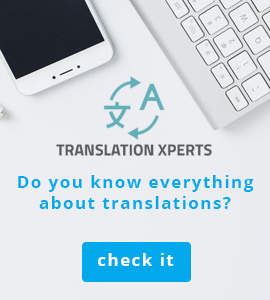Multi-regional and multilingual websites
Open borders and easier access to customers from outside our country make more and more companies want to adapt their websites to these changes. Adding new language versions allows you to extend the range of the offer on it. It would seem that in such a case it is enough to translate the content, but the matter turns out to be a bit more complicated.
How, then, should we ensure the proper implementation and optimisation of a multiregional or multilingual website? Multi-regional website - what is that?
This is a website, oriented towards users living in different countries. It is often the case that a website is both multiregional and multilingual. Multilingual website (multilanguage)?
As the name suggests, this is a website with more language versions. Creating such a website should be simple, but the problem is that each language version of the website should be treated as a separate service, which should be developed and properly managed. How to manage a multilingual website?
First of all, we must remember to translate the entire content of our site. You cannot translate only the home page or menu into another language, leaving the original subpages, navigation elements or captions under the pictures.

We do not have to modify the source code, but remember that the lack of unique content in each language version, causes the creation of duplicates. And this, as we know, can have very unpleasant consequences. Automatic translation is not a good solution in this case, so it is better to choose to block such subpages by indexing, which allows the robots.txt file.
When creating multilingual websites, we must remember that each language version should have its own unique URL. Furthermore, translated versions of the website should not use cookies, and links to particular versions should be placed on all subpages. Automatic forwarding, by implying the user's language, is not a good idea either. It will then not be possible for the user to index and use all language versions.
Address structures - which work best?
Domain domains - country-specific domains are top-level domains that inspire more trust among users. The problem may be the availability of domains for registration and the cost of purchasing them; subdomains with global domains - we do not have to pay for additional domains, and the Search Console allows you to specify geographical targeting; subdirectories with global domains - also allow geographical targeting, but the separation of language versions by the search engine may be a problem.











